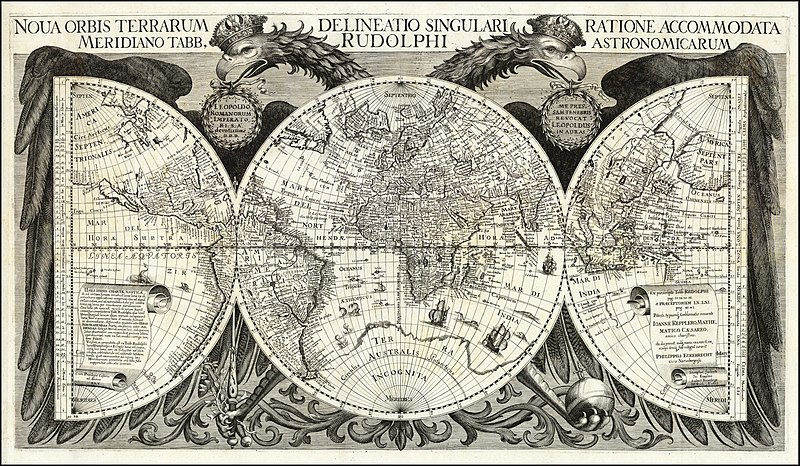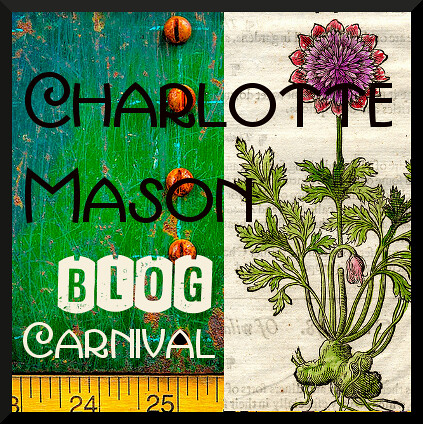I just knew that you all were just sitting on the edge of your seats waiting for the sequel to the really long post with lots of book titles on it... and I will not let you down! ;)
Geography covered by region (AOy1-8):
Now, you'll note some of the regions have more resources listed than others, that is in part due to the fact that several years list several book
options. From my estimation of things, The Book of Marvels in Y5, really adds a LOT to AO Geography... Oh, and with exception to Kim in Y5 I haven't listed books under other categories such as Literature that might also add to the overall study of Geography **(see note below). Also, see AO's rotation for covering basic geography in years 1-6,
here & click over to
each year's booklist on the AO site to support them with your amazon-linked purchases, if you will!
I've also purposefully left out AO y9-11 because there is such a wide variety of books available, and much is left to parent/student discrimination/discretion. :) Feel free to mention certain geographical locations covered in any of those titles in the comments as well.. (
see this post for complete list of Ambleside Online Geography titles - Years 1-11)
 N. America:
(Y1)
N. America:
(Y1) The Great Lakes (Canada/U.S. ) [
Paddle-to-the-Sea
by H.C. Holling]
(Y2) U.S. states of the Southwest [
Tree in the Trail
by Holling]
U.S. east coast, around South America, west coast of U.S. and to the Orient.[
Seabird
, Holling]
(Y4) Mississippi River; US States along river; Gulf of Mexico [
Minn of the Mississippi
, Holling]
(Y5) (The Bay Bridge, California), (San Francisco, California), (Yosemite Falls, California), (The Grand Canyon, Colorado/Arizona), (Boulder Dam, Colorado River), (Niagara Falls, Canada/New York), (New York City), (Washington DC) [
Book of Marvels: The Occident
, by Richard Halliburton]
(Y5) (Gulf of Mexico), (central Mexico), (Chicen Itza, Yucatan, Mexico) [
Book of Marvels: The Occident
, by Richard Halliburton]
(Y5) ch5 (American colonies); ch6 (Washington DC); ch7 (New England); ch8 (New York); ch9 (New England); ch10 (Great Lakes USA); ch11 (Mississippi River); ch12 (Florida); ch13 (western US); ch14 (Grand Canyon, Yellowstone western US); ch15 (California); ch16 (Alaska); ch17 (Canada); ch18 (Mexico); ch19 (Central America) [
A Child's Geography of the World, Hillyer]
 Carribean/S.America:
(Y5)
Carribean/S.America:
(Y5) (Haiti), The Panama Canal (Central America), (Machu Picchu, Peru), Iguaza Falls (Argentina/Brazil), (Rio de Janeiro, Brazil), [
Book of Marvels: The Occident ,
, by Richard Halliburton]
(Y5) ch20 (Caribbean, Cuba, Haiti, etc) ch21 (Ecuador, Peru); ch22 (Amazon River, Brazil); ch23 (Argentina, Chile) [
A Child's Geography of the World, Hillyer]
(Y7) Spain, Atlantic Ocean, Bahamas, Dominican Republic, Canary Islands, Cuba, Lesser Antilles, Greater Antilles, Puerto Rico, Haiti, Trinidad, Venezuela, Central America [
Christopher Columbus, Mariner
by Samuel Eliot Morison] OR [
The Life of Christopher Columbus
by Edward Everett Hale]
(Y7) Peru, South America, Pacific Ocean, Pacific Islands [
Kon-Tiki
by Thor Heyerdahl ]
 Africa:
(Y5)
Africa:
(Y5) (Timbuctoo, western Africa), (spray from Victoria Falls, south Africa) [
Second Book of Marvels: The Orient
, by Richard Halliburton, 1938]
(Y5) ch64 (Egyptian pyramids); ch65 (Morocco, Sahara Desert); ch66 (Africa, Livingstone); ch67 (African jungles); ch68 (South African diamonds) [
A Child's Geography of the World, Hillyer]
(Y6) Mid-Southern Africa [
The Story of David Livingstone
, Vautier Golding]
 Europe:
(Y3)
Europe:
(Y3) Mediterranean Sea, Italy, Adriatic Sea, China, South (east) Asia, tiny bit of former USSR? [
Marco Polo, see AO site for recommended authors]
(Y5) Gibraltar (Spain), Carcassonne (castle in southern France),Mount St. Michael (castle in northern France), (Reims Cathedral, France), The Tiger of the Alps (Matterhorn, Switzerland), The Monastery of St. Bernard (Switzerland/Italy), St. Peter's (Rome, central Italy), (Mt. Vesuvius, southern Italy), (Pompeii, southern Italy), (Blue Grotto, Capri, off Italy), (Athens, Greece), (Simopetra, Orthodox monastery, Mount Athos, northern Greece), (Moscow), (Santa Sophia, Istanbul, Turkey)
[
Book of Marvels: The Occident
, by Richard Halliburton]
(Y5) ch25, 26 (England); ch27 (Wales, Ireland); ch28, 29 (France); ch30 (Belgium, Holland); ch31 (Gibraltar, Granada); ch32 (Madrid, Portugal); ch33 (Switzerland); ch34 (Venice); ch35 (Florence); ch36 (Rome, St. Peter's); ch37 (Mt. Vesuvius); ch38 (Germany); ch39 (Denmark); ch40 (Scandinavia); ch41 (Norway, Sweden); ch42 (tip of Norway); ch43 (Russia); ch44 (southern Russia, Caspian Sea,); ch45 (Poland, Romania, Yugoslavia); ch46 (Greece); ch47 (Turkey) [
A Child's Geography of the World, Hillyer]
(Y7) North along the west coast of Ireland [
The Brendan Voyage 
by Tim Severin]
(Y7) Britain, places in beloved storybooks (Winnie-the-Pooh Country),(Robert Louis Stevenson’s childhood home), (Arthur Ransome's Swallows and Amazons), the River Thames, looking for Toad Hall by Kenneth Grahame in The Wind in the Willows, Pook’s Hill (on Rudyard Kipling’s farm), the heights of Tintagel, etc. [
How the Heather Looks
by Joan Bodger]
Middle East:
(Y5) Middle East [
How the Heather Looks
, by Voskamp]
(Y5) The Travels of Demetrius (Greece and Ephesus, Turkey), (King Mausolus's tomb, western Turkey),
The Colossus (Rhodes, off Turkey), The Pharos (lighthouse, Alexandria, Egypt), (Sphinx and Pyramids, Egypt), The Pyramids Today (Cairo, Egypt), The Labyrinth (Knossos, Crete), (Mecca, Saudi Arabia), (Petra, Holy Land), The Dead Sea (Holy Land), (Dome of the Rock, Jerusalem), (Solomon's Temple, Jerusalem), (Temple of Jupiter, Syria), (Queen of Palmyra, Syria), (Bagdad, Persia/Iraq), Babylon (Iraq)[
Second Book of Marvels: The Orient
, by Richard Halliburton, 1938]
(Y5) ch47 (Turkey); ch48 (Asian camels); ch49 (Asia Minor); ch50 (the Holy Land); ch51 (Jerusalem, Israel); ch52 (Nineveh, Bagdad); ch53 (Arabia, Mohammed); ch54 (Persia/Iran)
 Asia:
(Y3)
Asia:
(Y3) Mediterranean Sea, Italy, Adriatic Sea, China, South (east) Asia, tiny bit of former USSR? [
Marco Polo, see AO site for recommended authors]
(Y5) (Madrasa College and Isfahan, Persia), (Udaipur, western India), (Palace in Udaipur, western India), (Taj Majal, Agra, India), (Taj Majal, Agra, India), (Mt. Everest, Nepal/Tibet), (Lhasa, Tibet), (Bhuddist Dalai Lama, Lhasa, Tibet), (Hindu temple, Madura, southern India), (Indo-China temple, Angkor, Cambodia), (Great Wall, China), (Fujiyama, Japan), [
Second Book of Marvels: The Orient
, by Richard Halliburton, 1938]
(Y5) ch48 (Asian camels); ch49 (Asia Minor); ch55 (Calcutta, India); ch56 (Bombay, Hindus); ch57 (Siam, Thailand, Burma); ch58 (Tibet); ch59 (China); ch60 (China); ch61 (Siberia); ch62 (Japan); ch63 (Fuji, Japan) [
A Child's Geography of the World, Hillyer]
(Y5) India [
Kim
, Rudyard Kipling]
Australia/Oceania: ?!?!?!?
(Y5) ch69 (Australia) [
A Child's Geography of the World, Hillyer]
What in the world?!? You Aussie ladies have got the right to protest!
Give some suggestions here, PLEASE!!
Atlantic Voyages:
(Y5) ch 24 (Atlantic Ocean) [
A Child's Geography of the World, Hillyer]
(Y7) North along the west coast of Ireland, then north-west and north to thread through the Hebridean islands, north again to the Faroes, then west to Iceland, west again to Greenland, then south-west along the coast and the edge of the Arctic pack ice to Labrador and Newfoundland. [
The Brendan Voyage 
by Tim Severin]
(Y7) Spain, Atlantic Ocean, Bahamas, Dominican Republic, Canary Islands, Cuba, Lesser Antilles, Greater Antilles, Puerto Rico, Haiti, Trinidad, Venezuela, Central America [
Christopher Columbus, Mariner
by Samuel Eliot Morison] OR [
The Life of Christopher Columbus
by Edward Everett Hale]
Pacific Voyages:
(Y5) ch70 (South Sea Islands, Hawaii) [
A Child's Geography of the World, Hillyer]
(Y7) Peru, South America, Pacific Ocean, Pacific Islands [
Kon-Tiki
by Thor Heyerdahl ]
General Geography: understanding oceans, topography, mountains, atmosphere, etc.
(Y4) ch1 (General Earth Intro); ch1, 2 (Atmosphere); ch3 (Continents); ch4 (Oceans); ch5 (Seasons, Climates, Weather); ch6, ch7 (Inner Earth, Core, Tectonics); ch8 (Volcanoes); ch9, ch10 (Latitude, Longitude) [A Child's Geography: Explore His Earth, Ann Voskamp]
(Y5) ch1 (the world from space); ch2 (mentions millions of years evolution); ch3 (cross section of the earth); ch4 (all the people on earth) [
A Child's Geography of the World, Hillyer]
**Please point out any errors you see, and/or any additions in the comments...








































